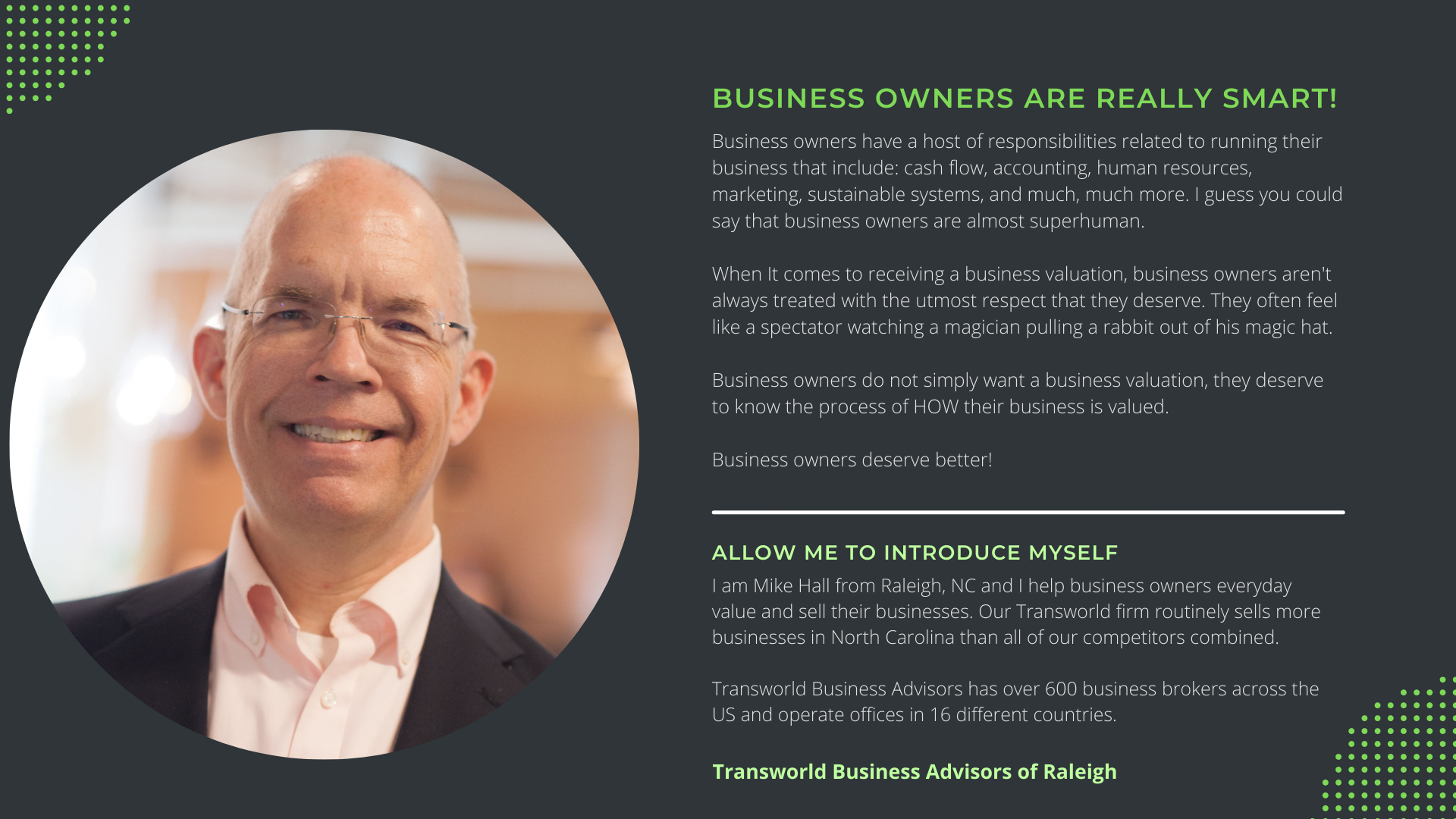Business Valuations:
Understanding The Art & Science
In his best-selling book, Outliers, author Malcom Gladwell details hours of interviews and research on what it takes to master complex skills and processes. According to Gladwell’s research, it requires 10,000 hours of practice and application to acquire the skills that set one apart as a proficient.

While it may not require exactly 10,000 hours of practice to equip a business broker to excel at his job, the process of valuing and selling a business is still a skill that must be honed by research and experience.
The market for existing businesses is extremely competitive. According to BizBuySell, a premier research provider in business sales, at any given day a business listing is competing against 45,000 other listings for buyer attention. Furthermore, a full 70% of those that are listed will never sell. Without the skills of a savvy broker who has honed the skill of accurate valuations, the chances of you experiencing a successful sale drop precipitously.

In order for a broker to become good at what he does, he first of all has to understand that business brokerage and performing accurate valuations is crucial. A quick glance at a business’s taxes and profit and loss reports is woefully inadequate for determining the intrinsic worth of a company. Business valuations are part science and part art.
The process begins, of course, with the science of gathering and computing numbers, but once that process is done, then the nuanced art of research, critical thinking, and analysis must kick in. This nuanced art starts with the assumption that no two businesses are alike.

A common misconception that many business owners carry is the idea of a universal multiple. The problem with this misconception is that it assumes a uniformity that doesn’t exist in the real world. Just because a business that you heard of sold for a 3 multiple of sellers discretionary earnings or EBITDA doesn’t mean that your business will do the same.
There are so many factors that have to be taken into account when assigning a valuation multiple here are just a few examples:
· Age of the business
· Strength of the management team
· Profit margins
· Historical financial performance
· Customer concentration
· Owner involvement
· Physical location
· Covid bounce back
· Existence of recurring revenue
· Strength of the competition
· Accuracy and clarity of financial accounting
Sufficed to say that a valuation multiple has to follow the specifics and nuances of each individual business situation. Any broker who assigns a multiple for a valuation without taking these and many other factors into account is not being thorough.

One of the main tools for bringing together all of the data collected in the valuation process is the recast report. A recast report allows a broker to organize the historical financials and display them in an easy-to-digest format. It also allows the broker to dig into the numbers to find any professionally accepted allowable addbacks to the net income.
In addition to those features, the recast report allows the broker to calculate a seller’s discretionary earnings or EBITDA number for the last 3 years of the business that can be applied to the valuation multiple for determining the business market value.

It is important to understand that a thorough recast report will be structured so as to calculate the sellers’ discretionary earnings (SDE) or EBITDA number through weighting. This means that each SDE or EBITDA number for the 3 most recent years will be assigned a weight depending on a number of factors.
The process of weighing the numbers to arrive at an average is also commonly used by SBA-approved lenders to give more nuance and accuracy to their calculations.

At the end of the recast report is the actual final business market value number. This number is typically expressed as a range of value. For instance, if the research shows that the multiple for your business is a 3 then the range may be expressed in terms of a 2.5 multiple, a 2.75 multiple, and a 3 multiple.
The reason for having this range is to give you options as to your pricing strategy. Every business owner has different motivations. Some business owners want to list higher in the range and are willing to stay in the market longer to see what happens. Other sellers, however, may be more concerned about a shorter sales cycle and want to exit the market more quickly, therefore, going lower in the range.
Having options for sellers is a crucial component of the pricing strategy and the sales process.

As you can see, the process of analyzing and valuing a business is hard work that requires patience, critical thinking, and attention to subtle details that often get overlooked. Business sales rise and fall on the ability of reputable business brokers to find the crucial pieces of information that will enable them to accurately represent your business.

Selling a business is a legacy decision and we understand this. Many of our clients have owned their businesses for decades and the decision to sell their business comes with emotion knowing that generations of their family may be impacted.
Wise business owners also know when the right time for professional assistance whether it's legal, accounting, or a business exit expert. Knowing the market value of their business is a starting point that helps business owners be better prepared to make this all-important decision.
Transworld Business Advisors has been rated the #1 business brokerage firm in the US by IBISWorld and our 42 years of experience puts seasoned professionals to work for you. We are local and no one confidentially sells more North Carolina businesses than our team.
If you are considering the sale of your business, contact us today so that we can help you understand the business sales process and begin a complimentary business valuation.


